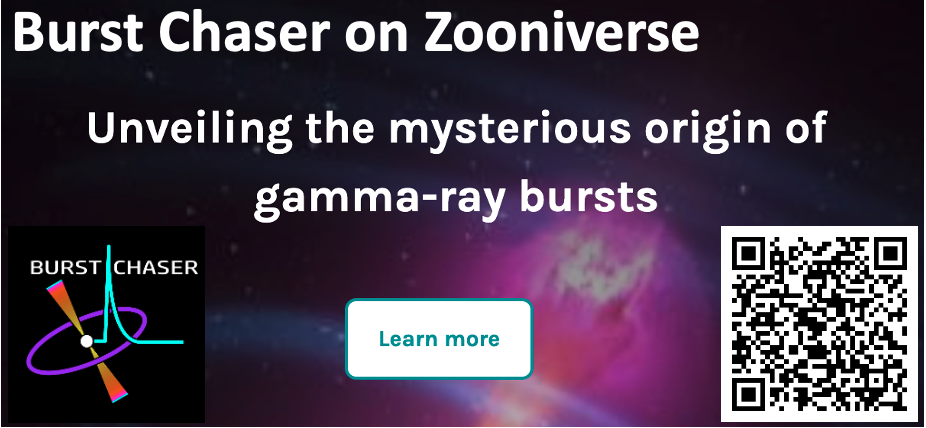2 min read

Yes, the universe IS talking to you! Gamma-ray bursts, massive explosions visible from everywhere in the observable universe, are telling us something about how stars end their lives and how massive black holes form. Now astronomers are asking you join the Burst Chaser project to read the signals from these bursts and decode what the universe is saying.
NASA’s Neil Gehrels SWIFT observatory regularly detects pulses of gamma rays, a very energetic form of light, coming from billions of light years away. At Burst Chaser, you’ll examine plots that show how much gamma ray energy arrived at this space telescope as a function of time and classify their shapes---the pulse shapes.
Gamma-ray bursts are known to be mostly connected to supernovae or the mergers of neutron stars and black holes, but exactly how these events produce pulses with such a variety of characteristics remains a mystery. “We need your help to classify these pulses for more clues of what they really are!" said Professor Amy Lien from the University of Tampa, the project’s Principal Investigator.
Besides professional astronomers like Lien, the project’s science team includes three undergraduate students from the University of Tampa: Katherine Kurilov, Carter Murawski, and Sebastian Reisch. Several NASA volunteers also helped design the project: Sovan Acharya, Eduardo Antonini, Sumit Banerjee, Marco Zaccaria Di Fraia, Jonathan Holden, Vikrant Kurmude, Hugo Durantini Luca, Orleo Marinaro, John Yablonsky, and U.S. military veteran, Danny Roylance, interviewed here. The project platform is hosted by Zooniverse, a NASA Partner.
You can join this amazing collaboration, too. Go to https://www.zooniverse.org/projects/amylien/burst-chaser to help produce the first pulse structure catalog and unveil the mysterious origins of gamma-ray bursts!
